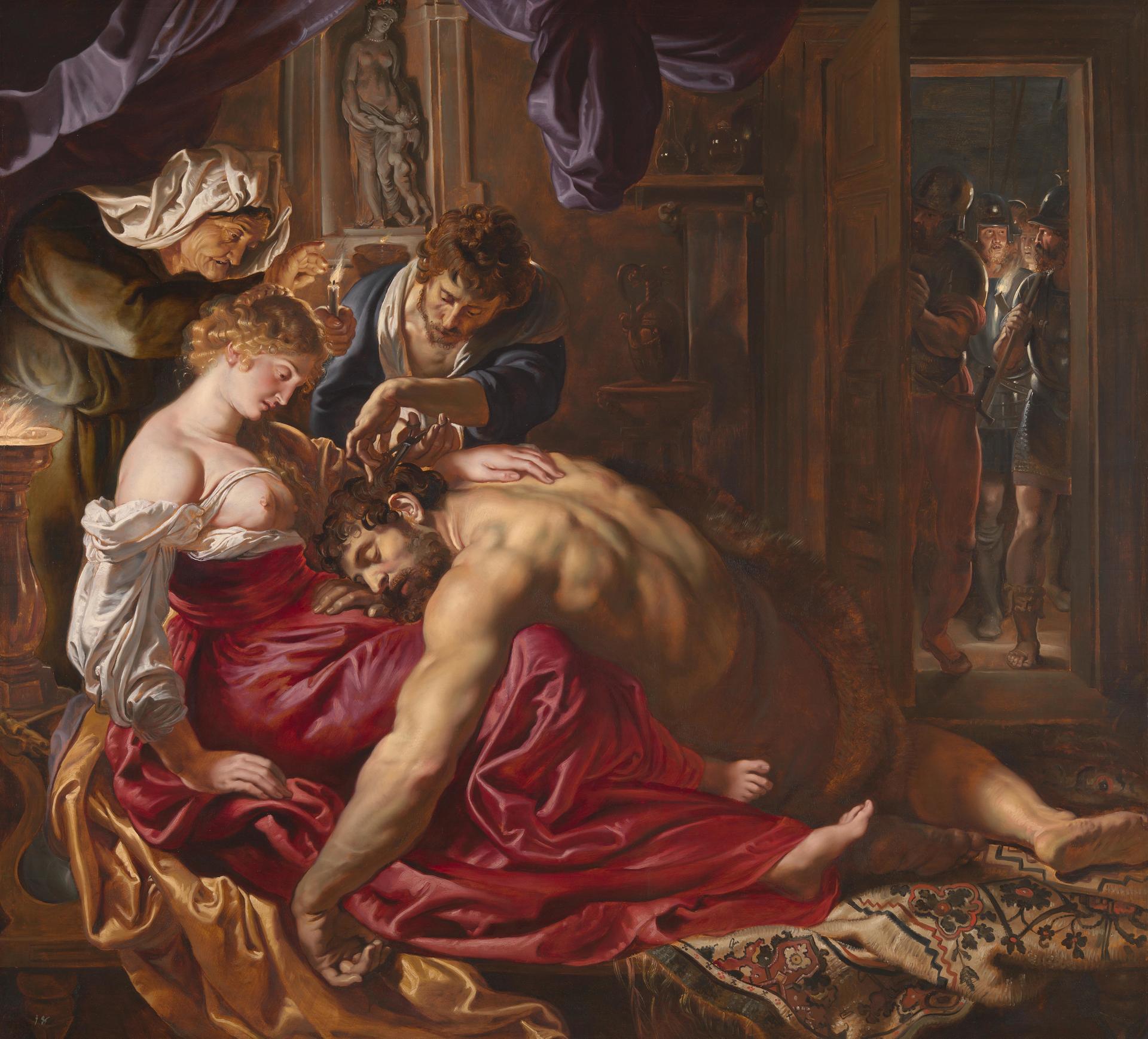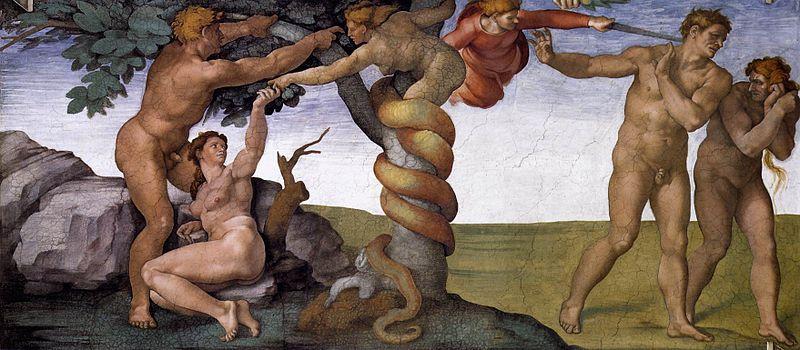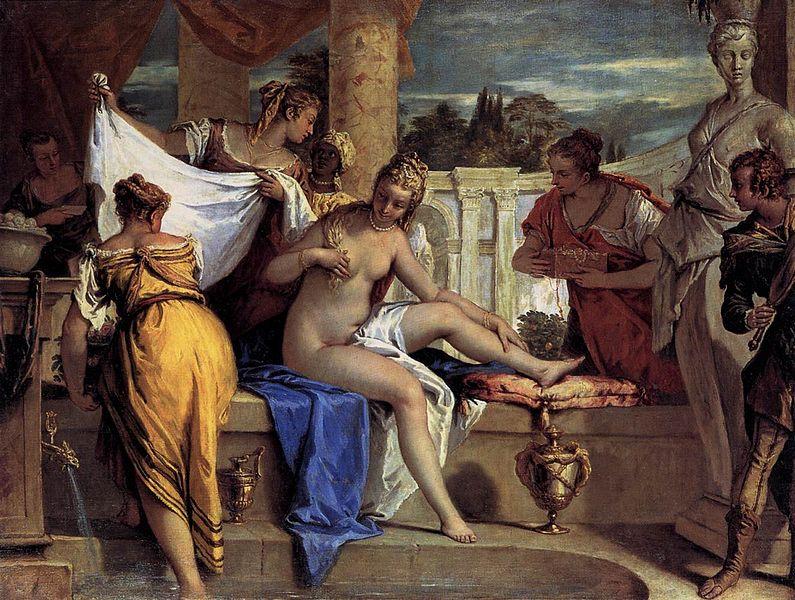Women in the Bible play many roles. To some, the positions they take are brave and courageous, but to others they’re just notorious. Women are often cast in dichotomies: servants and leaders, pious and villainous. Few women in the Bible actually make it into the spotlight, but when they do, the light shines brightly.
◊
Seductresses, temptresses, or victims of their time and place? The Bible is filled with women, but, by today’s standards, they are too often portrayed in negative ways. In most cases, women in the Bible are limited to two types: pious and silent, or conniving and dangerous. But are these fair representations of their characters? If you look at them through a modern lens, they’re mostly intelligent, courageous, and strong – traits that weren’t always valued in the past.
Not all women are scorned, though. There are many holy and righteous women in the Bible: Sarah, Ruth, and Leah in the Old Testament, and the Mother Mary and Mary Magdalene in the New Testament, to name a few. They are praised for their devotion and are rewarded with children and God’s love – and they play bold, important roles in Scripture. While these women are celebrated, many others are viewed a little differently. Want an example? Pick a woman in the Bible, and there’s a good chance that she’s described directly or implicitly as being a prostitute.
Delilah and Samson: The Notorious Haircut
Have you ever had a bad haircut? Odds are, it had nothing on Samson’s.
From old Hollywood movies to popular song, the story of Samson and Delilah has been an alluring subject in pop culture. People are fascinated by the villainized Delilah who slashed Samson’s hair, and the surprising love that may have bloomed between the two.
Samson was a brutal warrior and biblical playboy. He led the people of Israel as a judge and protected their land with his herculean strength, a gift from God that he used to fight the Philistines (a rival nation). No one dared to mess with Samson.
The Philistines were a group of people in Levant during the 12th century B.C.E. They were said to be a barbaric, warlike people and are remembered in the Bible for their conflicts with the Israelites. However, much of what we understand about the Philistines comes from accounts by rival civilizations; authentic Philistine texts and artifacts are scarce. Today, the word “philistine” describes a person who is hostile or indifferent to culture and the arts.
Cue Delilah: the Philistine “temptress” who brought on Samson’s downfall. Do a quick search on Delilah, and you’ll come up with some choice words, such as “voluptuous,” “treacherous,” and “scheming.” Even worse, some interpreters called Delilah – you guessed it – a deceitful prostitute even though that heavily loaded word is never used to describe her.
Delilah was recruited by the Philistines to discover Samson’s weakness and to expose him. After several of her attempts to get at the truth, Samson finally disclosed his secret: the source of his strength was his hair. That night, Delilah cut his locks while he slept; when he woke, the Philistine forces were able to overcome and capture him.

Reubens's "Samson and Delilah"
(Image courtesy of the National Gallery, via Wikimedia)
It’s easy to assign Delilah the role of a Philistine Mata Hari, but look at it through a modern lens and you might find a little compassion for her. The Philistines promised her money if she betrayed Samson. Delilah was a woman without much of her own, and she didn’t have the security of a family. The promise of money would have been hard to resist. And, if she was in fact a Philistine, she would have had an allegiance to her own nation. When you think about it, it’s not so hard to understand her motivation.
While there are different ways of interpreting the story, I prefer Regina Spektor’s artful imagining of the biblical tale: A weary Samson, intent on loving Delilah at all costs, uses his sheared hair as an excuse to be devoted to her alone. Yes, I know that contradicts the biblical story, but maybe Delilah isn’t quite the villain she’s made out to be.
Eve and the Forbidden Fruit
The story of Creation is indisputably the most iconic narrative of the Old Testament. Even if you have no knowledge of the Bible whatsoever, I’d still imagine you have heard the story of Adam and Eve. But did you know that there are two Creation stories in the Book of Genesis? In the first story of Creation, both man and woman are created together. There is no mention of a hierarchical structure – man and woman are equal. It’s a beautiful story where everything “was good.”
It’s not until the second story that Eve is constructed from Adam’s rib, and mankind fell from grace. The assumption is that Eve was created for Adam – that women were created to meet men’s needs. Unfortunately, this interpretation is still prevalent among some believers today. It feeds the outdated, patriarchal ideology that man is dominant and woman is submissive, and sets the stage for Eve’s wrongdoing and fault as part of her nature.

Michelangelo's "The Fall and Expulsion from Paradise"
(Image courtesy of the Sistine Chapel, via Wikimedia)
Such interpretations and endless repetition in pop culture have painted an unfair portrait of Eve. She is the temptress, seducing Adam and dragging him out of Paradise. Today, many see Eve as villainous, though the original scripture does not blame Eve alone. This idea of Eve assigns women an unjust role in society and contributes to the conflicts of gender politics.
In John Milton’s Paradise Lost, Eve is painted as the ultimate manipulator. Milton’s epic poem embellishes the narrative of Eve as the original sinner, influencing poor, innocent Adam to eat from the forbidden fruit:
She gave him of that fair enticing fruit
With liberal hand: he scrupled not to eat,
Against his better knowledge; not deceived,
But fondly overcome with female charm.
This is quite a departure from the original Biblical tale. In fact, the Book of Genesis never says Eve convinces Adam to take a bite of the apple. Instead, Adam is with Eve, and he simply eats after she does. No lies. No manipulation. No seduction.
Thanks to Milton’s retelling, Eve has gotten stuck with a pretty bad rep. Yes, according to Genesis, Eve sins. But so does Adam. They do it together. And she isn’t really conniving; she only eats the fruit in pursuit of knowledge – something we all pursue in our lives daily.
Bathsheba: Seductress or Victim?
Bathsheba’s story is of adultery, murder, and royalty. The tale goes that Bathsheba is a beautiful woman who is left alone when her husband goes off to war. (What’s so great about war that men are always going off to it?) One day, Bathsheba is bathing on her roof and is spotted by King David. The king is immediately smitten by lust. He sends messengers to Bathsheba’s home, and they invite her to join the king. Yes, he knows she is married. Yes, she goes.

Bathsheba Bathing
(Image courtesy of Sailko, via Wikimedia)
But how do you say no to the king? Through modern eyes, we can see that Bathsheba has no choice but to sleep with King David. She would be unable to refuse him without consequence, but she would also be unfaithful to her husband if she consents. Bathsheba is caught in an impossible situation. Damned if she does, damned if she doesn’t. Of course, interpretations of this story leave Bathsheba at fault. “But she was the one bathing in his view,” and “If she didn’t tempt him …” Typical.
Well, to make matters worse, poor Bathsheba becomes pregnant after her rendezvous with the King. Of course, upon hearing this, King David does the honorable thing. No, just kidding. Instead, he orchestrates the murder of her husband, and then makes Bathsheba his next wife.
From that point forward, Bathsheba makes the most out of her tragedy. She becomes a great power alongside David, and ensures her children will be heirs to the throne. She is smart and calculating, and she knows how to survive – even with a past filled with grief. It’s no surprise that Bathsheba has some detractors (mostly calling her a loose woman, like the others mentioned here), but King David has received his share of criticism, too, as well he should.
Jezebel: Femme Fatale
There’s no real way to spin this positively … Jezebel is bad. Take a look at her name. “Jezebel” literally means a “shameless or morally unrestrained woman.” So who is this bad girl of the Bible?
Arguably the most notorious woman in the Old Testament, this Phoenician princess is nothing lady-like. Jezebel, in an arranged marriage to merge nations, joins King Ahab and becomes Queen of Israel. And she doesn’t take the throne quietly. As soon as she becomes the queen, she begins stirring up controversy. She refuses to leave behind her religious beliefs. Rather than conform to her husband’s faith, she continues her devotion to the polytheistic faith of Phoenicia by worshipping the gods – specifically the pagan god Baal. She is strong – stronger than her husband, even – and (surprise!) she is labeled as a prostitute. (While this slur was unlikely, the claim was used to discount her even further.)
Now, I can’t fault her for being devoted to her own faith. In fact, it’s admirable that she holds true to her beliefs in the face of adversity. But, I can judge her for what happens next. She becomes increasingly unhappy with the monotheistic beliefs of Israel. And while Marie Antoinette may have said, “Let them eat cake,” it’s a safe bet that Queen Jezebel’s catch phrase would have been closer to, “There will be blood.”
Jezebel terrorizes Israel during her reign and is responsible for the brutal murders of countless prophets. But, in the end, she gets her just desserts … and they aren’t the cakes Marie Antoinette would have offered. Jezebel is eventually murdered by her servants, who throw her out of her window to be eaten by dogs waiting below.
Seeing These Controversial Women Through Modern Eyes
It’s important not to judge these women of the Bible too harshly. Yes, there are some unflattering ideas about them, but many translations and interpretations were influenced by old, outmoded traditions and biases -- the kind that are best left to the past.
Echoes of these stories are all too often heard in the halls of power even now. It can feel like we’re stuck in a time warp, with the Bible’s sometimes negative portrayals of women being used as justification for the unjustifiable. Women are faulted for caring too much or caring too little, for being too much like Eve and not enough like Mother Mary. But, of course, nothing is so simple.
We need to read biblical stories in a new light, keeping open minds but taking the traditional views with a grain of salt. As we read their tales, we owe the women of the Bible a little justice, and a little mercy -- just as we owe these to the women of today.
Want to learn more about these sometimes notorious women? Check out the documentaries Notorious Women Of The Bible and Scarlet Woman: The True Story Of Mary Magdalene.
Ω
Title image: Mary Magdalene by Bartolomé Esteban Murillo, San Diego Museum of Art. (Credit: Wmpearl, via Wikimedia Commons)

